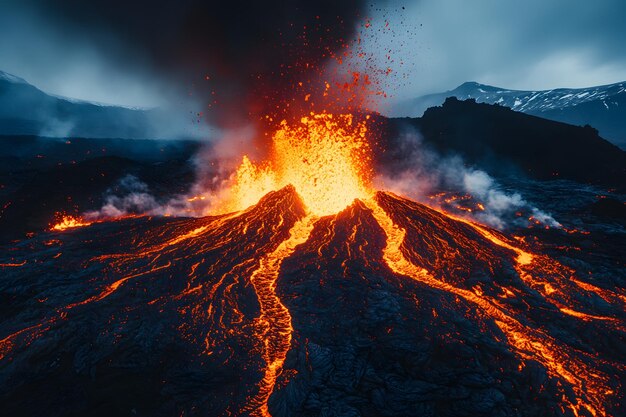wherearewegoing.net – Volcanoes are awe-inspiring natural wonders that demonstrate the dynamic nature of our planet. While they can create stunning landscapes, they also have the power to cause widespread destruction. Understanding volcanic eruptions and their aftermath is crucial for minimizing their impact on human life and the environment.
What Causes Volcanic Eruptions?
Volcanic eruptions occur when magma from beneath the Earth’s crust rises to the surface. This can happen due to the movement of tectonic plates, which allows magma to escape through vents or fissures. The pressure from gases and molten rock builds up until it is forcefully released in an eruption.
Types of Volcanic Eruptions
- Effusive Eruptions: These eruptions involve the steady flow of lava onto the surface, forming extensive lava fields. They are typically less explosive and occur at shield volcanoes, such as those in Hawaii.
- Explosive Eruptions: Characterized by violent explosions that eject ash, gas, and volcanic rocks into the atmosphere. These eruptions can form stratovolcanoes, like Mount St. Helens.
- Phreatomagmatic Eruptions: These occur when magma comes into contact with water, causing a steam-driven explosion. This type can be highly explosive and is often seen in island volcanoes.
Immediate Effects of Volcanic Eruptions
Volcanic eruptions can have immediate and severe effects, including:
- Lava Flows: Molten rock can destroy everything in its path, including homes and infrastructure.
- Pyroclastic Flows: Fast-moving currents of hot gas and volcanic matter that can obliterate nearby areas.
- Ash Clouds: Volcanic ash can disrupt air travel, damage machinery, and pose health risks to humans and animals.
Long-Term Consequences
The aftermath of volcanic eruptions can have lasting impacts:
- Climate Change: Large eruptions can inject sulfur dioxide into the stratosphere, leading to temporary global cooling by reflecting sunlight away from Earth.
- Soil Fertility: Volcanic ash can enrich soil, making it more fertile for agriculture in the long term.
- Economic Impact: The destruction of infrastructure and disruption of air travel can have significant economic consequences for affected regions.
Mitigation and Preparedness
Being prepared for volcanic eruptions involves:
- Monitoring and Early Warning Systems: Volcano observatories use various tools to monitor volcanic activity and provide early warnings to communities.
- Evacuation Plans: Communities near active volcanoes should have evacuation plans in place to ensure swift and safe relocation if necessary.
- Public Education: Raising awareness about volcanic hazards and safety measures can help communities better prepare for potential eruptions.
Conclusion
Volcanoes are a powerful reminder of the Earth’s dynamic nature. While they can pose significant threats, understanding volcanic processes and implementing effective mitigation strategies can reduce their impact. By learning from past eruptions and investing in research and preparedness, we can better protect human life and the environment from volcanic fury.
